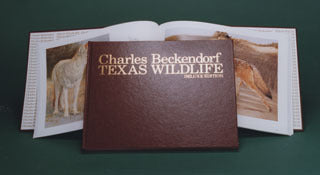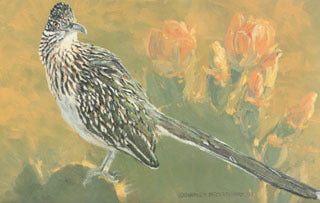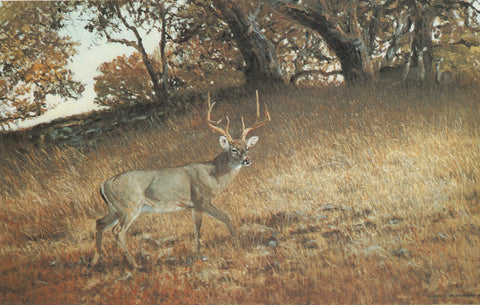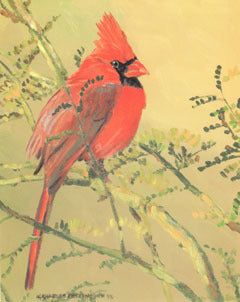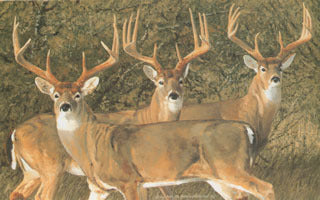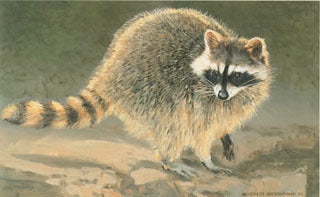
H-35 Racoon
Color Reproduction | By Charles Beckendorf
Additional Information
The raccoon is found throughout Texas. It is mostly nocturnal, but can also be seen during the day. It prefers to feed along streams and around lakes. It is omnivorous and will eat anything available, sometimes dunking or "washing" the food in water before eating.
The raccoon prefers to den up in hollow trees, stumps, rock crevices or ground burrows, but it can be found under or in just about any outbuilding or discarded equipment or materials.
This image is from the Charles Beckendorf Texas Wildlife book. The original was an acrylic painting on canvas (1992) and the size is approximately 14 X 11 inches. The total edition size of this print is 500.
This is a part of the Texas Wildlife Art Prints Collection.
Color Reproduction
The raccoon is found throughout Texas. It is mostly nocturnal, but can also be seen during the day. It prefers to feed along streams and around lakes. It is omnivorous and will eat anything available, sometimes dunking or "washing" the food in water before eating.
The raccoon prefers to den up in hollow trees, stumps, rock crevices or ground burrows, but it can be found under or in just about any outbuilding or discarded equipment or materials.
This image is from the Charles Beckendorf Texas Wildlife book. The original was an acrylic painting on canvas (1992) and the size is approximately 14 X 11 inches. The total edition size of this print is 500.
This is a part of the Texas Wildlife Art Prints Collection.
Beckendorf color reproductions are developed using four color process printing on fine white paper. This advanced technique utilizes separate color plates for each of the primary colors, plus black. High-resolution digital scans and special process inks are utilized to yield beautiful, accurate reproductions.
About the Artist - Charles Beckendorf
Charles grew up in Mathis, Texas, where he had the opportunity to spend hours on large ranches. Generous land owners gave him permission to wander freely over their ranches and he observed creatures in their natural surroundings. He developed a lifelong love of nature, whether it be in the tiniest of flowers or the largest of animals. It was at this time that he became a true naturalist.
We Also Recommend
REVIEWS

